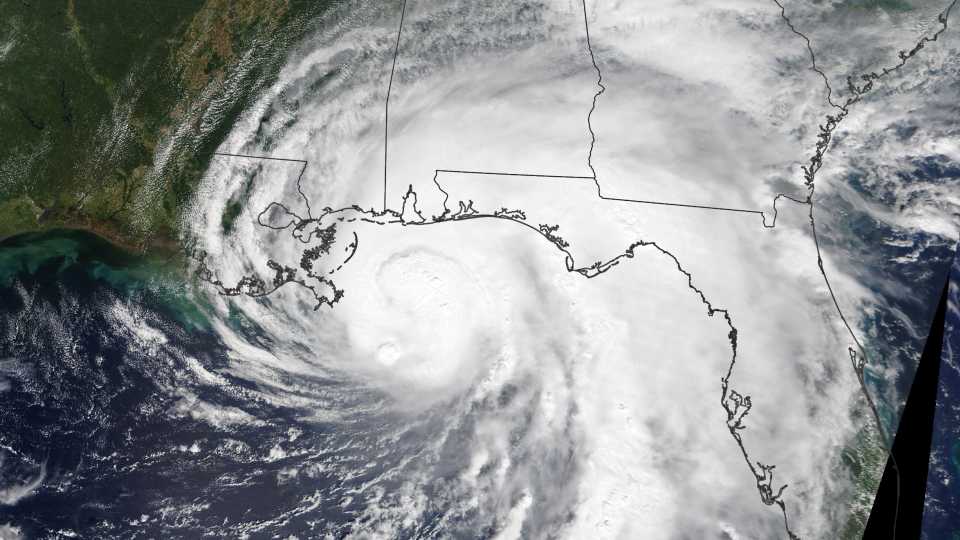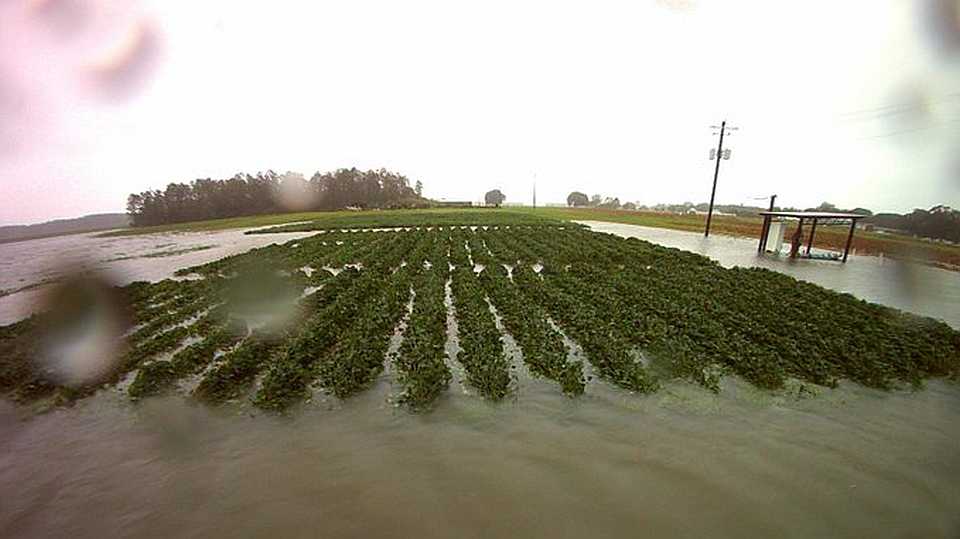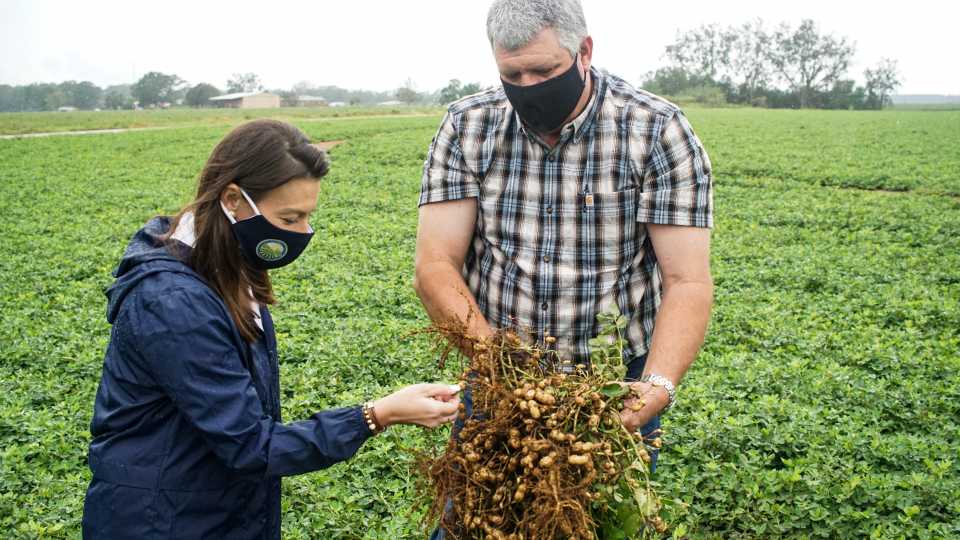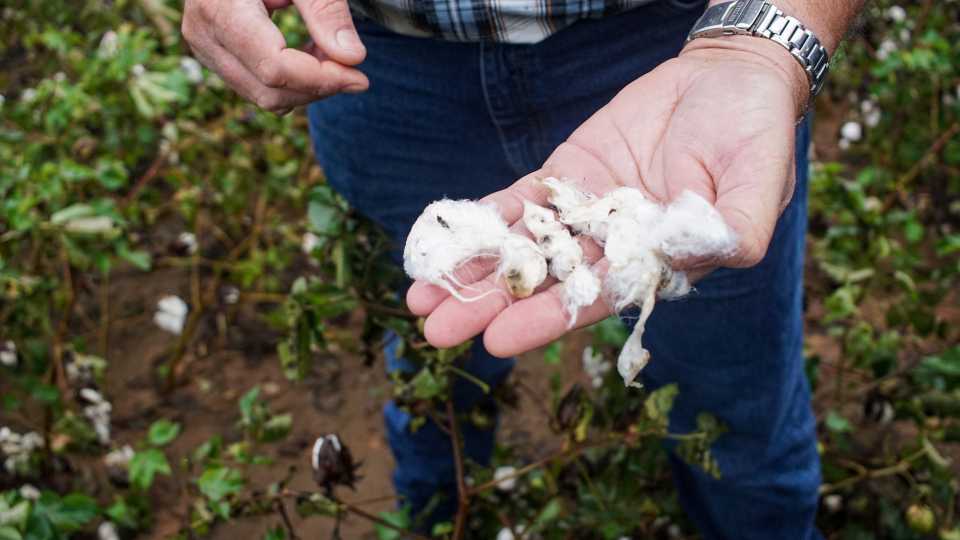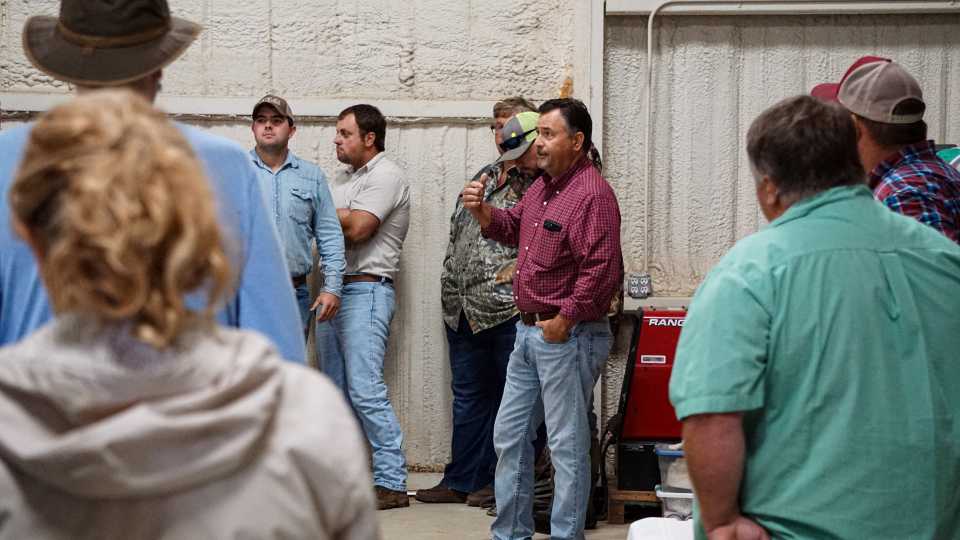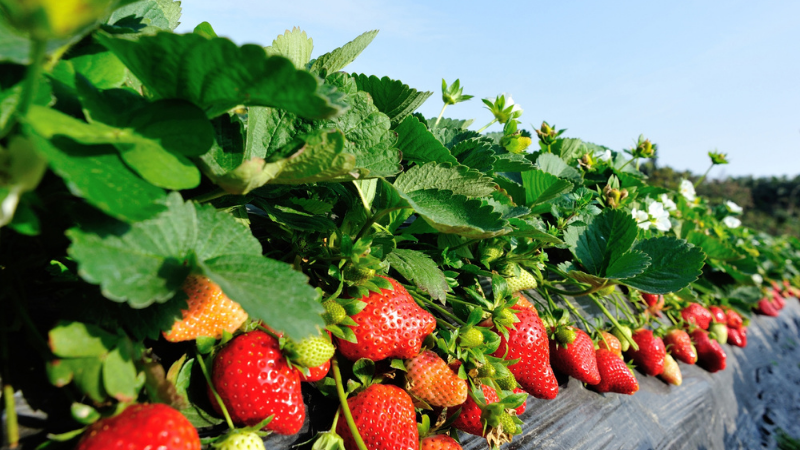Adding up Hurricane Sally’s Strike on Ag in the Florida Panhandle
Last week, Florida Agriculture Commissioner Nikki Fried toured parts of the Florida Panhandle to survey damage and speak with local officials and farmers about recovery efforts in the aftermath of Hurricane Sally. The Category 2 storm dumped copious amounts of rain over the area, leaving farm fields swamped amid what’s been a wild hurricane season along the Gulf Coast.
More than 50 growers from northern Santa Rosa and Escambia counties attended a meeting hosted at Jenkins Farms in Jay, FL, to share concerns with Fried and discuss the assistance needed for recovery. Some farmers there reported well more than a foot of rain.
Many local crops are facing major losses of an estimated 80% or higher. FDACS reports crops impacted by Hurricane Sally include 100,000 acres each of peanuts, cotton, and hay; 10,000 acres of corn; 4,000 acres of horse farms, and other commodities including pecans, walnuts, seafood, aquaculture, and timber. Some farmers estimate they may have total losses for some commodities.
According to UF/IFAS, seasonal crops, livestock, and aquaculture products produced in the region are valued at roughly $400 million and directly support more than 8,000 jobs, not including related economic contributions in supporting industries.
Fried wrote a letter to President Trump urging approval of Florida’s request for a Major Disaster Declaration for counties impacted by Hurricane Sally. Click here to see the letter and others she wrote to lawmakers. Since that, Trump has approved a Major Disaster Declaration for parts of Florida in response to Hurricane Sally.
The President’s disaster declaration does not include additional public assistance for other impacted counties beyond Escambia though, including Santa Rosa, Bay, Calhoun, Franklin, Gadsden, Gulf, Holmes, Jackson, Liberty, Okaloosa, Walton, and Washington, nor does it make available individual assistance, including Farm Service Agency disaster loans, for any of Florida’s impacted agriculture producers. Assistance may be provided through an expanded Major Disaster Declaration, or through a USDA Secretarial disaster declaration, which must be requested by a governor, their authorized representative, or the U.S. Farm Service Agency State Executive Director. This declaration has not yet been requested by Florida Gov. Ron DeSantis.
With Hurricane Sally being more of a rain-maker than wind event, official crop damage figures might take a little more to compile. The just-released Preliminary Assessment of Agricultural Losses and Damages resulting from Hurricane Sally report estimates the combination of crops, livestock, and aquaculture products lost will likely be valued between $55 million and $100 million.
“We anticipate that as fields dry out and can be effectively assessed, we will capture a more complete picture of the losses to the agricultural producers in this region,” says Christa Court, Director of the UF/IFAS Economic Impact Analysis Program and Assistant Professor in the UF/IFAS Food and Resource Economics Department. “We’re going to continue to gather assessments for Hurricane Sally damage and losses for at least the next several weeks, but our preliminary valuation estimate is a range to account for many of these unknowns. What isn’t destroyed may have diminished yield or quality, and then there’s secondary factors like disease spread due to missed control methods, or damage to equipment and infrastructure.”
Statistics from the National Weather Service shows Hurricane Sally dropped up to 20 inches of rainfall in a 72-hour period, with the highest levels measured along the Alabama/Florida border.
Scroll through the photo gallery above to see some of the scenes from Hurricane Sally’s wake.




